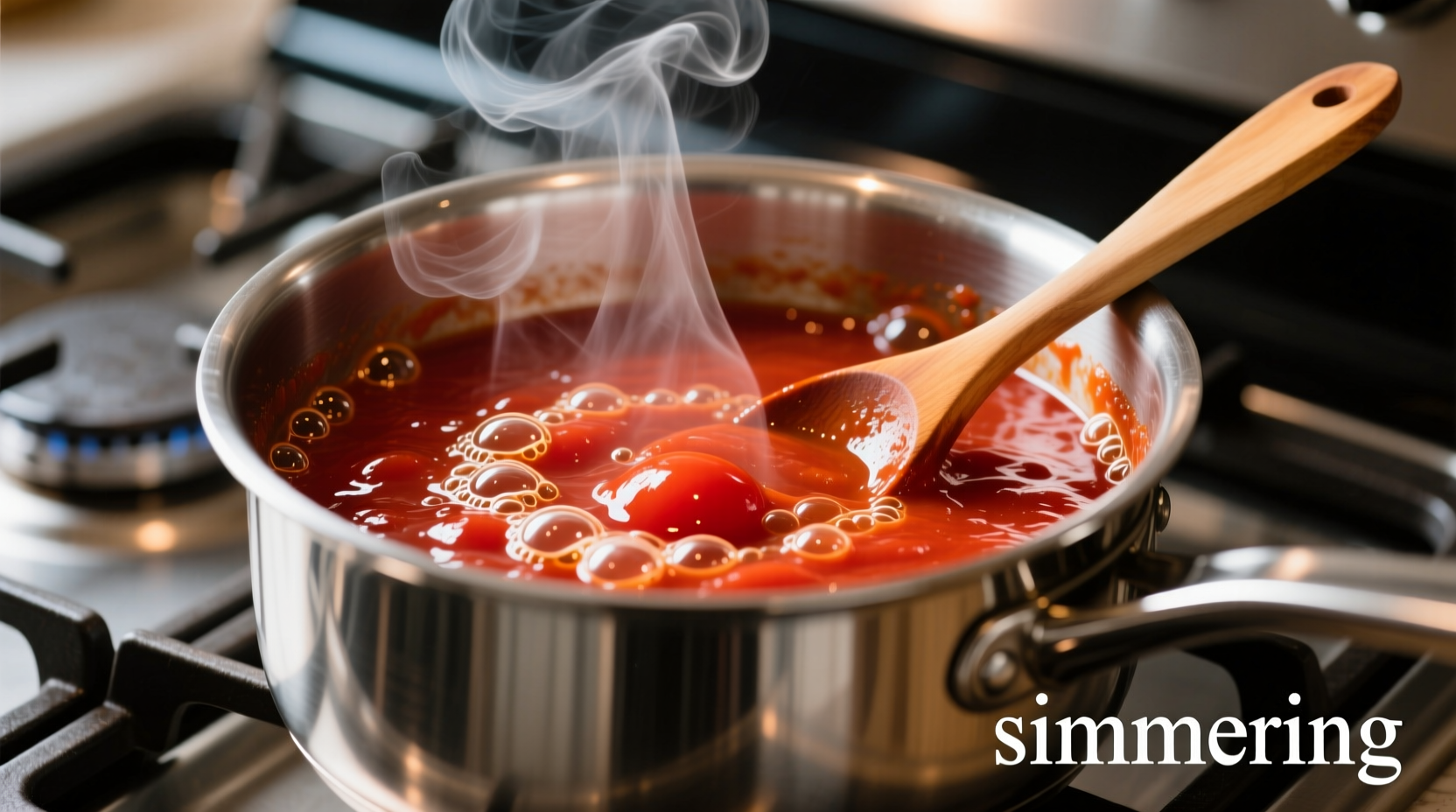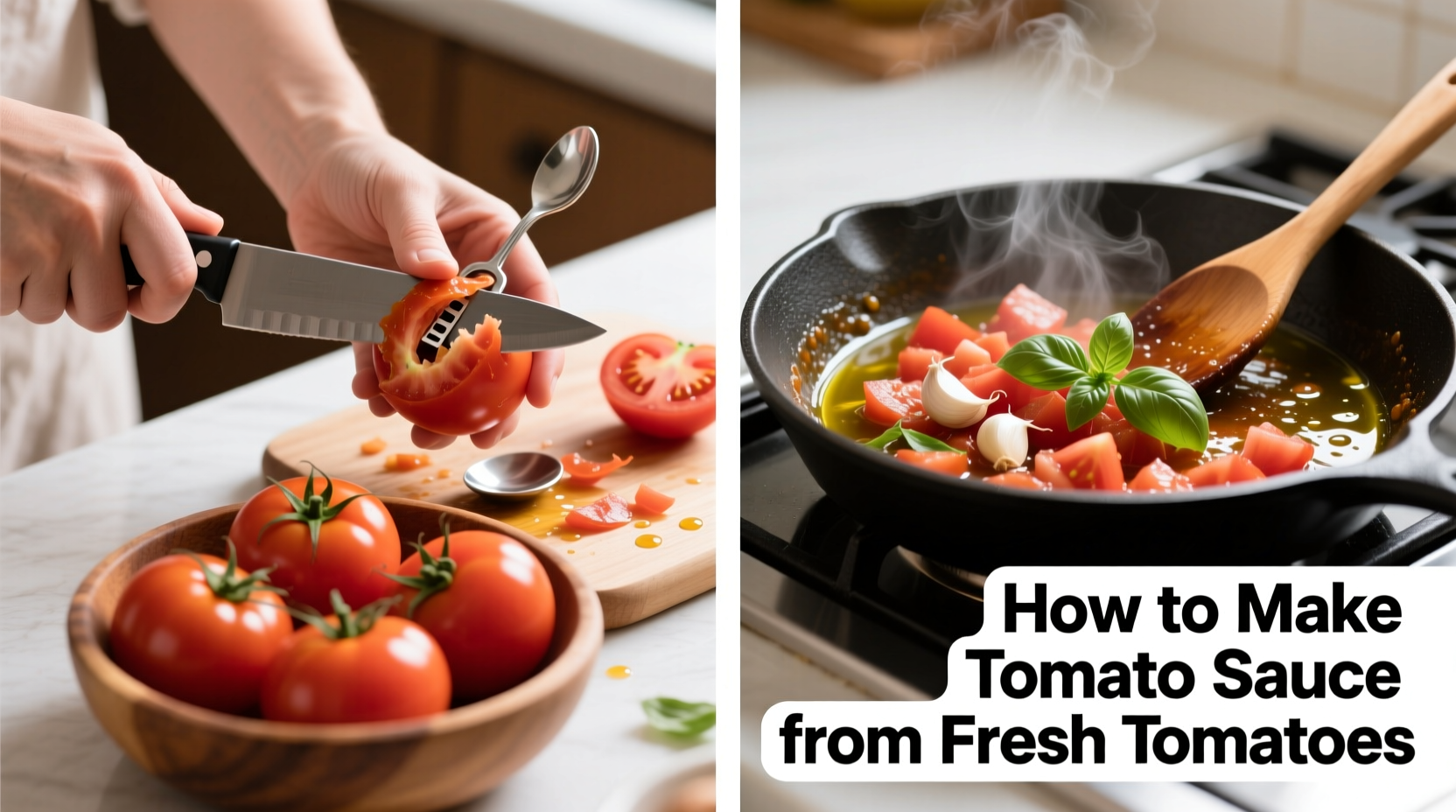There's nothing quite like the taste of homemade tomato sauce made from garden-fresh produce. Unlike store-bought versions loaded with preservatives and sugar, fresh tomato sauce captures summer's essence in a jar. Professional chefs agree that the secret to exceptional sauce lies in simplicity—quality ingredients and proper technique matter more than complexity.
Why Fresh Tomato Sauce Beats Store-Bought Every Time
Commercial sauces often contain added sugars, thickeners, and preservatives to extend shelf life. When you make sauce from fresh tomatoes, you control every element—acidity, sweetness, and texture. According to the University of California Agriculture and Natural Resources, fresh tomato sauce retains up to 30% more lycopene, the powerful antioxidant responsible for tomatoes' red color and health benefits.
| Tomato Variety | Best For | Sauce Yield per Pound | Flavor Profile |
|---|---|---|---|
| Roma (Plum) | Classic sauce | 1.5 cups | Rich, low moisture |
| San Marzano | Italian-style | 1.75 cups | Sweet, low acidity |
| Beefsteak | Chunky sauces | 1 cup | Balanced, versatile |
| Cherry | Sweet finishing sauces | 0.75 cups | Intense sweetness |
Gathering Your Ingredients and Equipment
For the best results, use 4 pounds of ripe tomatoes (about 8-10 large Romas). You'll need:
- 2 tablespoons extra-virgin olive oil
- 1 medium yellow onion, finely diced
- 4 garlic cloves, minced
- 1 teaspoon sea salt (plus more to taste)
- 1 tablespoon fresh basil or 1 teaspoon dried
- 1 teaspoon sugar (optional, balances acidity)
- 1 tablespoon lemon juice or vinegar (for canning safety)
Essential equipment includes a large stainless steel pot (avoid aluminum which reacts with acid), a blender or immersion blender, a food mill for seed removal, and canning jars if preserving.
The 5-Step Fresh Tomato Sauce Method
Step 1: Prepare Your Tomatoes (15 minutes)
Cut a small "X" on the bottom of each tomato. Blanch in boiling water for 30-60 seconds, then transfer to ice water. The skins will peel off easily. This critical step, recommended by the National Center for Home Food Preservation, ensures smooth texture without bitter skin flavors.
Step 2: Build Your Flavor Foundation (10 minutes)
Heat olive oil in your pot over medium heat. Add onions and cook until translucent (5-7 minutes). Add garlic and cook for 1 minute until fragrant—don't let it brown. This aromatic base creates depth without overpowering the tomato flavor.
Step 3: Simmer to Perfection (45-60 minutes)
Add peeled tomatoes, salt, and herbs. Bring to a gentle simmer (not a rolling boil) and cook uncovered, stirring occasionally. The sauce is ready when it coats the back of a spoon. For thicker sauce, continue simmering; for thinner, add reserved tomato liquid.

Step 4: Achieve Your Desired Texture (5-10 minutes)
For smooth sauce, use an immersion blender directly in the pot. For rustic texture, leave as is. If removing seeds and excess liquid, pass through a food mill. Professional chefs like Sophie Dubois emphasize that texture preference is personal—"Your sauce should match how you'll use it: smooth for pasta, chunky for pizza."
Step 5: Preserve Your Harvest (15 minutes)
For immediate use, cool and refrigerate for up to 5 days. For long-term storage:
- Freezing: Pour cooled sauce into freezer bags (lay flat for storage)
- Canning: Process pint jars in a boiling water bath for 35 minutes (add lemon juice for safe acidity)
Troubleshooting Common Sauce Problems
Too acidic? Add a pinch of baking soda (1/8 teaspoon at a time) or grated carrot during cooking. Too watery? Simmer uncovered longer or add tomato paste (2 tablespoons per cup of sauce). Bitter taste? You likely cooked garlic too long—start over with fresh garlic next time.
According to culinary research from the Culinary Institute of America, the ideal pH for safe canned tomato sauce is 4.6 or lower. When in doubt, use a pH meter or add lemon juice as recommended by USDA guidelines.
When This Method Works Best (And When to Choose Alternatives)
This fresh tomato sauce method shines when you have ripe, in-season tomatoes. If using underripe tomatoes, add 1 tablespoon lemon juice per pound during cooking. For year-round sauce making, consider combining fresh tomatoes with high-quality canned San Marzanos during off-season.
Important context: This method isn't suitable for pressure-canning low-acid foods. Always follow USDA guidelines for safe canning practices. The National Center for Home Food Preservation provides updated safety standards that supersede many traditional family recipes.
Three Chef-Approved Variations
- Arrabbiata Style: Add 1/2 teaspoon red pepper flakes with garlic
- Puttanesca Inspired: Stir in 2 tablespoons capers, 1/4 cup olives, and 2 anchovy fillets
- Garden Fresh: Add 1 diced bell pepper and 1 zucchini during simmering
Frequently Asked Questions
Can I make tomato sauce without peeling the tomatoes?
Yes, but the texture will be noticeably different. Unpeeled tomatoes create a slightly grainy sauce with visible skin bits. For smooth sauces like marinara, peeling is essential. If using a high-powered blender, you can skip peeling for rustic sauces, but the skins may impart a slightly bitter flavor.
How long does homemade tomato sauce last in the refrigerator?
Properly stored in an airtight container, fresh tomato sauce keeps for 5-7 days in the refrigerator. Always use a clean spoon when serving to prevent contamination. For longer storage, freeze portions in labeled containers for up to 12 months.
Why does my tomato sauce taste bitter?
Bitterness usually comes from overcooked garlic (browned instead of sautéed) or tomato skins. To fix bitter sauce, add a small pinch of sugar or grated carrot during cooking. If the bitterness persists, the tomatoes may have been underripe—next time, choose fully red, fragrant tomatoes.
Can I use green tomatoes to make sauce?
Yes, but green tomato sauce has a distinctly tart flavor and requires adjustments. Add 1-2 tablespoons sugar per pound of tomatoes and extend cooking time by 15-20 minutes. Green tomatoes contain more pectin, creating a thicker sauce naturally. Many chefs blend green and red tomatoes for complex flavor profiles.











 浙公网安备
33010002000092号
浙公网安备
33010002000092号 浙B2-20120091-4
浙B2-20120091-4